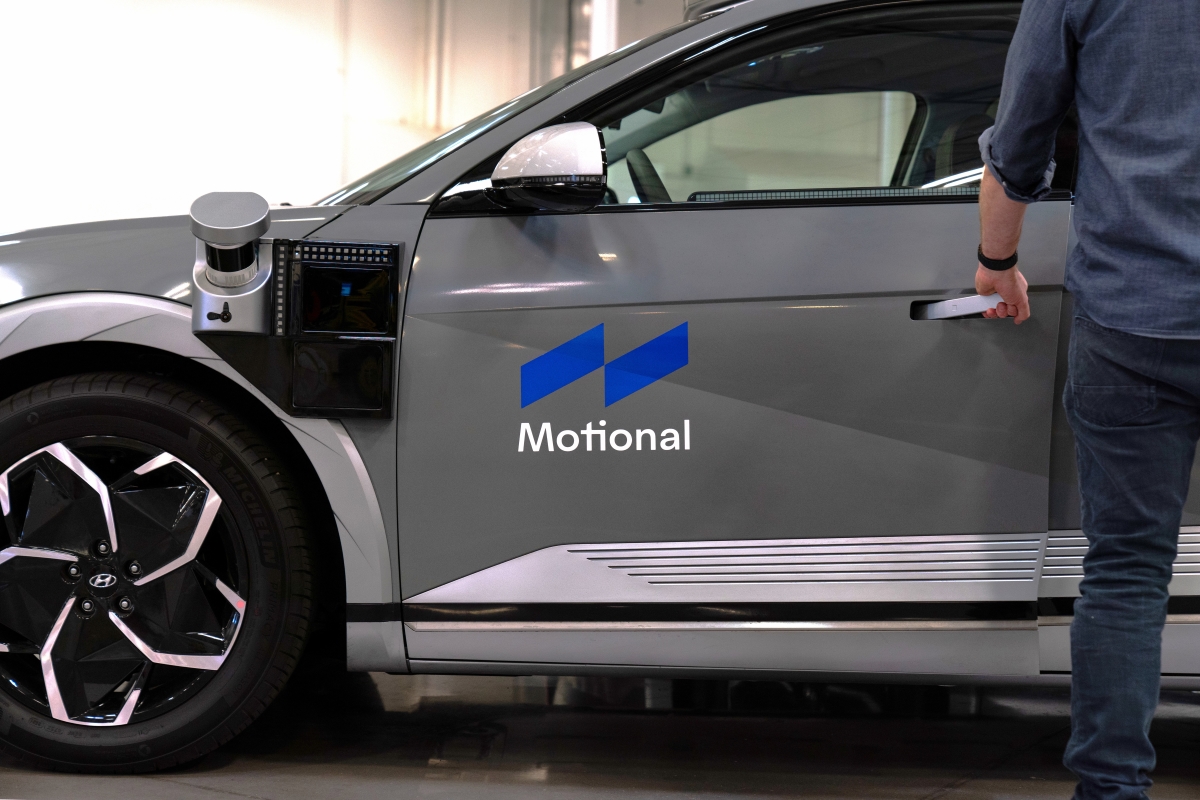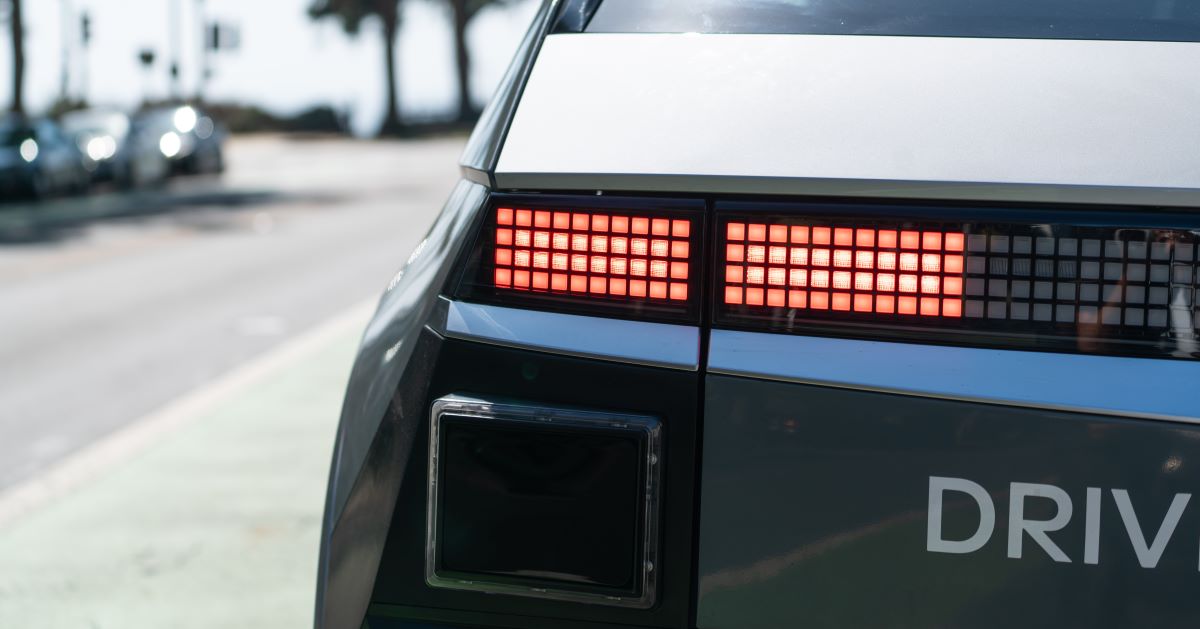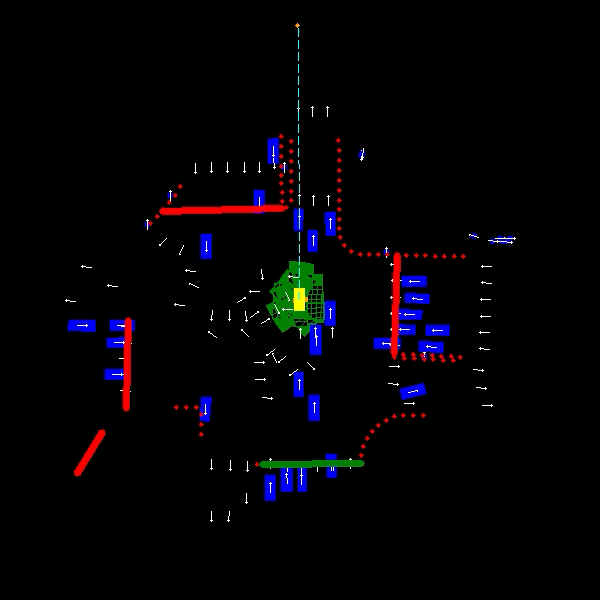The Motional AVs currently operating on public roadways feature an abundance of sensing hardware, far more than any consumer passenger vehicle on the road. Each robotaxi has a multi-modal sensor array consisting of radars, lidars, cameras, microphones, speakers, radio antennas, and GPS transmitters.
The choice of this configuration isn’t random; it’s the end product of years of data-backed research, safety-driven design, precision manufacturing, and repeated testing. It ensures that our IONIQ 5 robotaxi has 360-degree sensing around the vehicle, can safely navigate through complex and dynamic driving environments, and has built-in redundancies to ensure safe operation during weather events or hardware errors.
But in the spirit of continual improvement, and the need to scale up in support of full commercialization, Motional is studying whether future iterations of its robotaxi will need the same sensor setup – or could it be altered to utilize radars as more of a central sensing modality, without sacrificing performance?
To help us with this, Motional is leveraging the expertise of our two shareholders – Aptiv, one of the world’s largest vehicle technology suppliers, and Hyundai, a global leader in auto manufacturing and advanced manufacturing strategies. Our goal is to develop a next-generation sensor architecture based on the global supply chain’s most advanced hardware options that will maximize safety, resiliency, compute power consumption, and cost efficiency.

SEEING, HEARING, AND UNDERSTANDING
To operate safely, an AV needs to be able to see, hear, and understand what’s in its driving environment - other vehicles, pedestrians, cyclists, traffic cones, signals, overpasses, and train tracks, to name just a few. This happens through the AV’s onboard perception system, which consists of sensing hardware that collects data, and machine learning algorithms that translate that data into an understanding of objects in the environment.
The primary sensing hardware for this activity are cameras, short and long-range lidars, and short and long-range radars. Cameras use light to create two-dimensional images. Lidars use pulsed lasers to detect objects and create three-dimensional point clouds. Radars send out electromagnetic waves to detect objects and movement. Motional vehicles also are equipped with microphones that let us hear emergency vehicle sirens; antennas to communicate with vehicles, V2X and our command center; and GPS devices to help with tracking and localization.
This multi-modal approach, along with our innovative way to combine the data from these sensors, creates built-in redundancies. If the long-range lidar is accidentally damaged, the vehicle can still safely operate using radars and cameras, as well as short-range lidars. The different sensors also handle different scenarios better. Cameras, for example, which have generally been perception system workhorses, don’t work as well in low-light situations. Radar works in any lighting conditions and is great for seeing through foggy conditions.
So far, we have reason to believe our approach to hardware has been the right one. We have had zero at-fault accidents in more than 2 million miles of autonomous driving, including 130,000 public passenger rides.
But as AV technology evolves and improves, and as the global supply chain matures to support hundreds of thousands of SAE Level 3 and 4 vehicles across the industry in the coming years, our hardware strategy will change also.
ELEVATING RADAR’S ROLE
While thinking about future vehicles, and the required sensor architecture, Motional is taking into consideration a range of factors, including performance, durability, maturity, and cost. Based on these factors, Motional believes radars could play a larger role in future sensor architecture and possibly even become the central sensing modality.
Having served industrial, defense, and consumer purposes for more than 70 years, radars are a mature, tested, proven technology with an existing, diversified global supply chain. That supply chain is important when planning to outfit tens of thousands of robotaxis. More importantly, we know radars are durable: automotive grade radars, which are solid-state and have no moving parts, have been part of ADAS features in consumer vehicles for years.
Reliability and cost are important factors for AV companies, which need to keep robotaxis on the road in order to maximize time spent in revenue generating service and offset development investment. Automotive-grade radars cost significantly less than lidars. Even if an AV company increased the number of radar sensors on a vehicle, the overall development cost would drop, providing a faster pathway to profit.
Most AV companies also rely heavily on lidar to feed the visioning system, as the point clouds created by lidar help resolve object shapes. But as AV stacks grow more sophisticated, a sensor system that relies more on could be more helpful in navigating complex driving scenarios.
For one, radars have a farther detection distance than lidars. Currently, lidar scans lose their advantage of high point density when objects are beyond 150 meters. Radar scans maintain their fidelity over 200 meters, and also retain their functionality in the dark and in bad weather better than other sensing hardware.

More importantly, the Doppler capabilities of radar are crucial for an AV’s prediction and planning functions. So many roadway scenarios, such as unprotected left turns, need to have accurate, instantaneous velocity information for other objects in the driving environment. Radars provide that key piece of information.
Robotaxis aren’t the only passenger vehicles getting more technologically advanced. Advanced Driver Assistance Systems are increasingly common in commercial vehicles; these systems can include brake detection, blind spot sensors, and adaptive cruise control. The hardware, software, and sensors that makes ADAS possible is similar to the technology used by AVs. Aptiv’s FLR4+ long-range radars are already active on our IONIQ 5 robotaxis, which are in the final stages of testing before starting Level 4 driverless operations. And as we look to the future, we expect that Aptiv will play a key role in developing the next-generation of high-performance radars.
SENSING THE FUTURE
Motional is a company made up of engineers, scientists, researchers, and many other dedicated people who are committed to the idea of developing safe, reliable, and accessible robotaxis that change the way the world moves. Some of these people have been working on autonomous driving technology for decades.
Our R&D background means we’re always looking for ways to improve our technology and we go where the evidence takes us. Our future commercialization plans mean we’re also taking into consideration hardware cost and durability.
The data shows right now that a multi-modal sensor approach provides vehicles with the vision they need to operate safely and comfortably. But as AV technology advances, and the global supply chain responds to industry demand, the evidence could lead us in a different direction, including one where radars are the central sensors.

